Meet MajorDom: a smart home of the future that is really smart
 Mark Parker
Mark Parker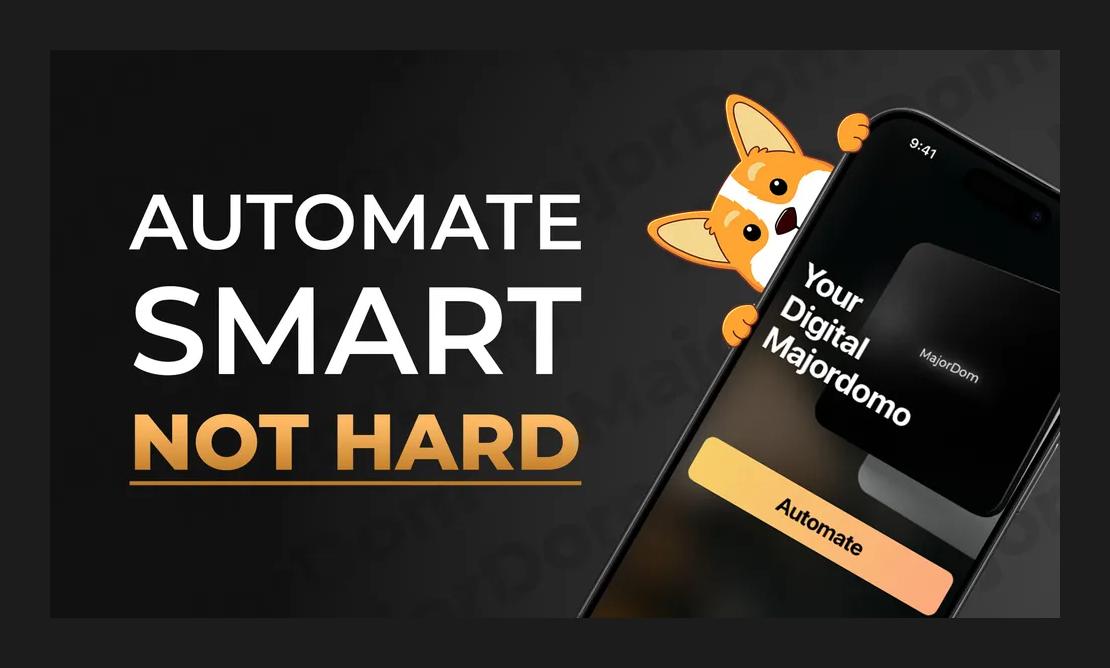
MajorDom — a brand new open-source smart home ecosystem, built for privacy, autonomy, and wide device support. The platform combines intelligent automations with easy plug-n-play design and a really smart voice assistant.
In the world of smart homes, you often have to choose between usability and functionality. Thinking about what an ideal smart home could be, we came up with the idea of MajorDom — a system that seeks to change this balance and simplify life without sacrifice. In this post, we'll share our vision and some core principles of the new ecosystem, including privacy, autonomy, and broad device support.
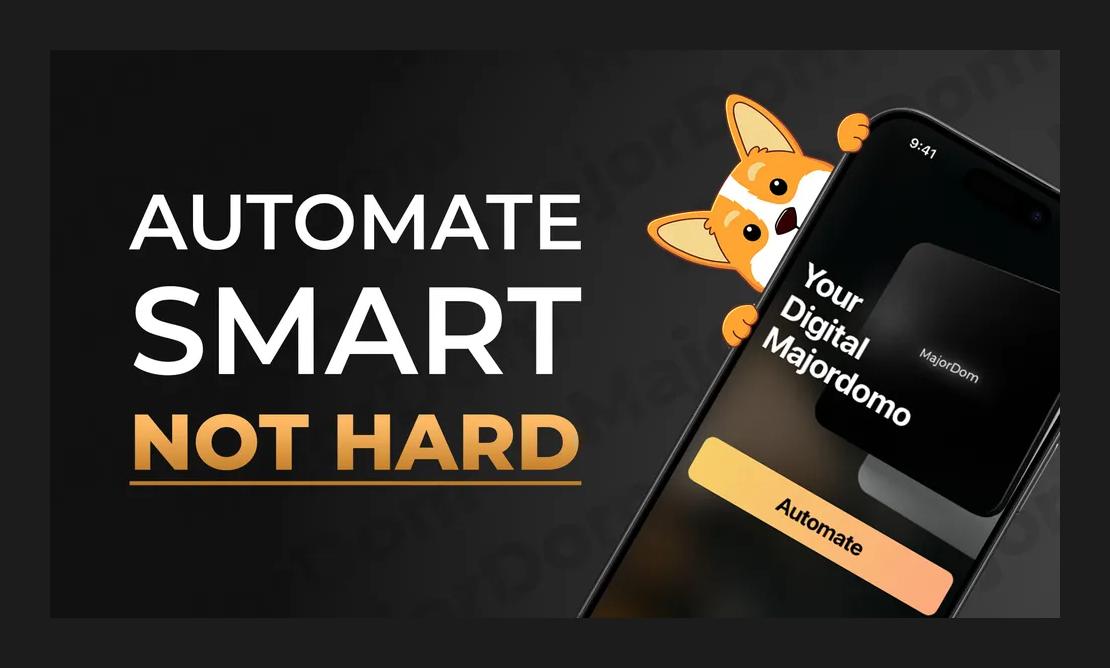
Gadgets
Today there are many different gadgets for the home: lamps, curtains, heaters, vacuum cleaners, security, and microclimate sensors. They are designed to make life easier, but not everything is so simple.
Previously, each device had its own control protocol, its own standards, its own security methods, and each of them needed a separate application. The more devices there are in the house, the more time you need to devote to managing them, which turns into a new routine. It's like juggling too many balls.
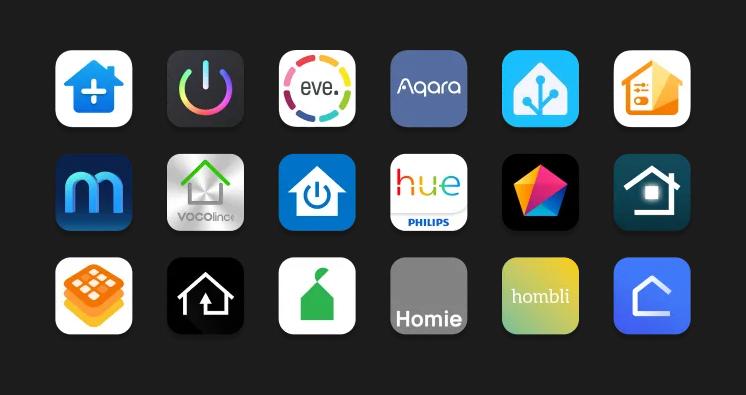
Current solutions
Smart home (or home automation) systems were supposed to solve this problem, but they are still far from ideal. There are two types of such systems: proprietary from digital corporations and popular open source. Unfortunately, both of them have disadvantages. I propose to draw up a graph in which the ease of use of complex to simple ones will be on the x axis, and the smartness and functionality of the system will be on the y axis.
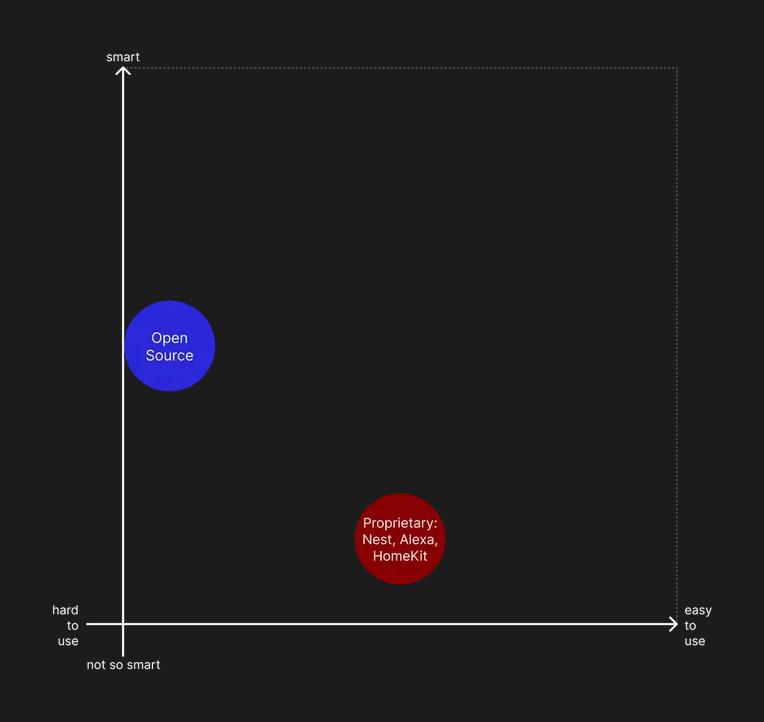
It turns out that all proprietary systems are located somewhere in the center-bottom. They provide some functionality that the average person can handle after spending some time learning. Most often, these systems are closed and support only their limited list of devices in their special application. Their functionality boils down to replacing the physical switch with a button on the phone or simple voice commands. Sometimes there are elementary automations, or rather scripts that need to be written manually.
At the same time, they are too dependent on cloud solutions. A server failure, changes in geopolitics, new regulations, or a simple lack of Internet means a smart home shutdown.
But what’s worse is that the most popular systems belong to advertising or marketplace giants who make money by selling users’ personal data. This is the basis of their business model, which is why they cannot change, so trust and privacy are out of the question.

Those who want more features or don't want surveillance have to switch to open solutions and pay for it with the complexity of configuration and installation. This is the area above and to the left of center, but often it's worth it. Open systems offer more freedom, integration with almost any device and protocol (thanks to plugins), unlimited customization and full control. This is a task for techies who want to spend their evenings studying forums and developing their own configurations. Likewise, some people like to spend hours in the garage going through all the parts of the car. I'm not saying it's bad, everybody deserves a hobby, but most people want a car just to drive it. Of course, you can hire a professional to handle all the devices for a fortune. But what if you don't want to hire a professional or become one yourself?
We want to make a system that will occupy the upper right corner: it will work right out of the box, support a wide range of devices, securely store user data, and at the same time be smarter and more functional than the rest.
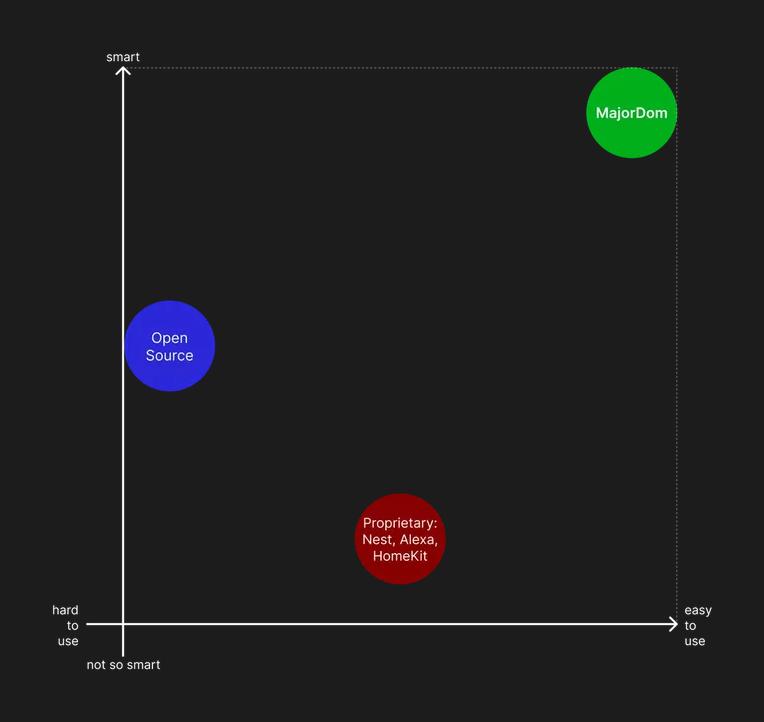
Smart home ecosystem
Let's talk about how smart home ecosystems work and how they differ from home automation systems. It all starts with devices that directly control the house: lamps, relays, modules with a motor. This is the first "physical" layer. The second layer is for interface, mobile apps, voice assistants, etc.; let's call it "application" layer. Now, let's connect them via wifi or bluetooth.
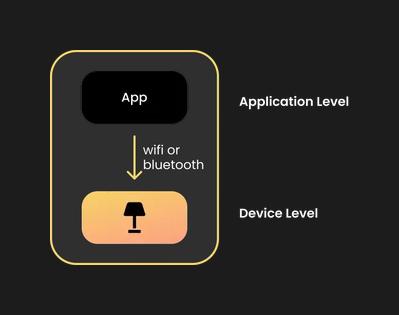
But let's imagine that we have several devices, and each one has an app. Doesn't look very comfortable, does it?
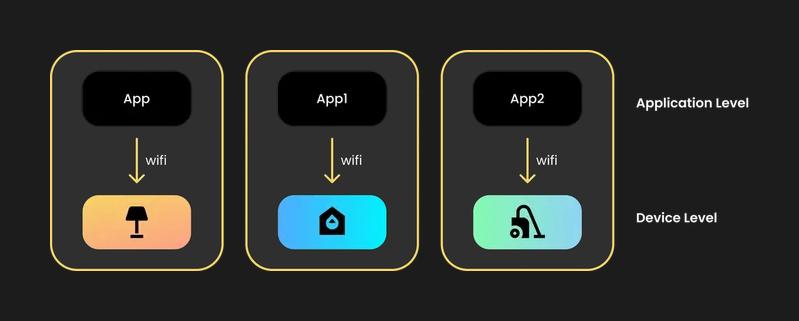
Now we will transfer the devices to more energy-efficient radio protocols. But how now to connect them to your smartphone? Let's add an intermediary in the form of a hub, which has a radio module on one side and the same wifi on the other. As a bonus, we will connect all devices from the same manufacturer to it. Now each app can control a few devices, but only produced by the same brand. This is what closed “ecosystems” look like. Each uses its own protocols and standards, so they are not compatible with each other.
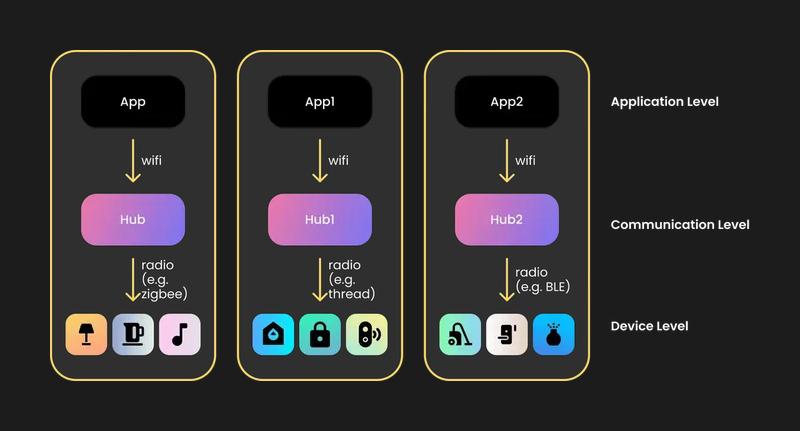
But what’s worse is that not all applications can communicate with the hub directly within a local network (LAN) and use the server even when you are at home. This is the case when turning off the Internet means a complete blackout, while turning on means remote control of the home from the cloud (do you trust the cloud of a company that makes money from selling your personal data but doesn't care about keeping it safe?)
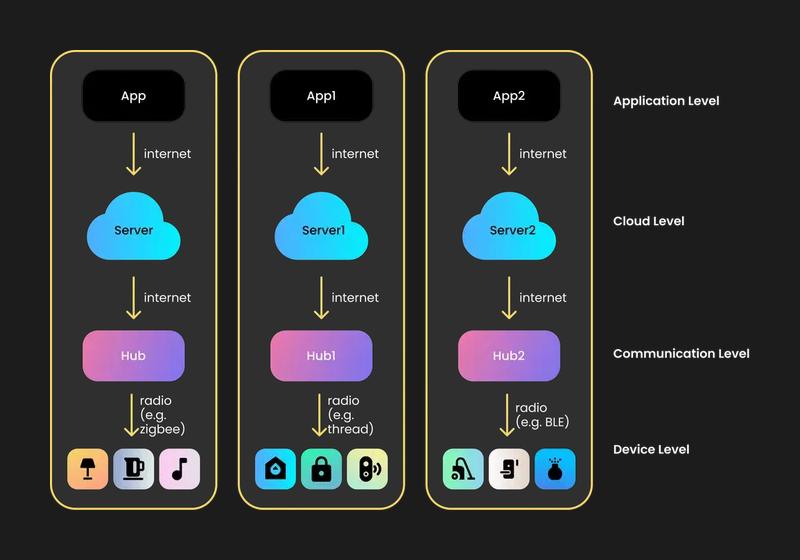
To fix this, we’ll replace the proprietary hub with a raspberry pi with some open source home automation system, and also add plugins for device integration. This makes it possible to combine all devices into one system, for example to program global automations or advanced scenarios. It's better, but one little thing called the interface is missing.
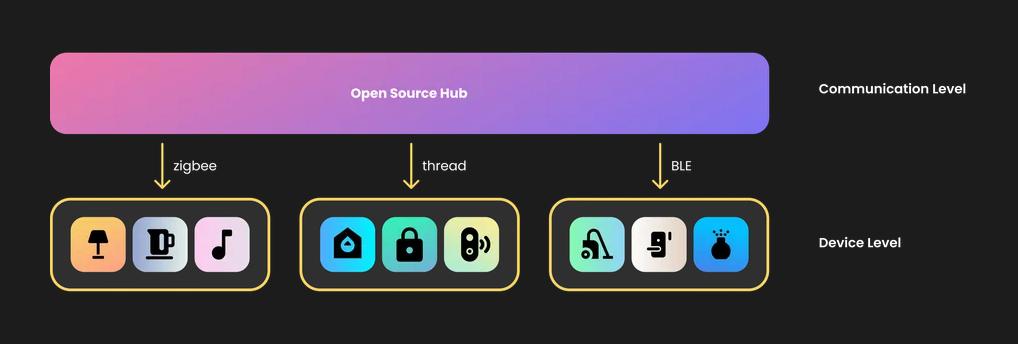
Fortunately, some open source solutions come with a web frontend or even a mobile application (not always user-friendly). By adding a couple more plugins, we can forward some devices (or all, if we are very lucky) of the devices to an application of one of the ecosystems. In this case, the hub acts as an intermediary or adapter for third-party devices. But now we are dependent on this ecosystem and receive all its disadvantages, which were discussed at the beginning of the article. Alternatively, we can connect another plugin with for a custom or 3rd-party cloud solution, but this becomes either too complicated or still not secure enough.
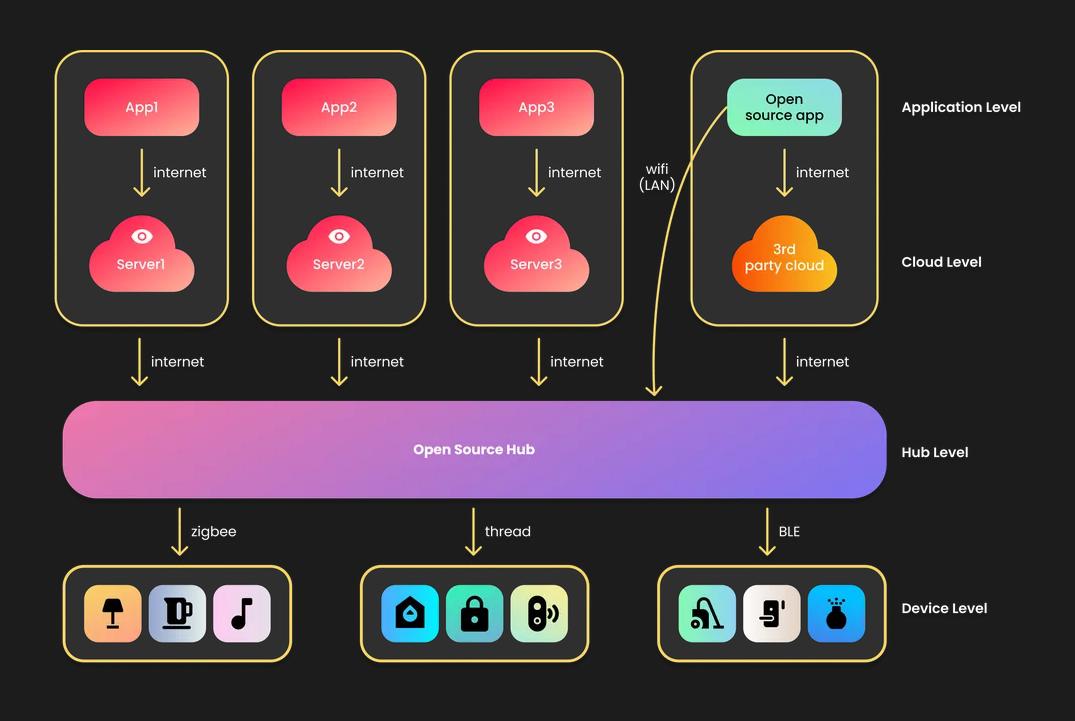
I would like to note that it is not always possible to completely replace a proprietary hub with a custom one. Often you will need to have both hubs (proprietary and custom) for the system to work and support required devices and applications. This could end up becoming a tangle of technology. In short, it's too complicated, and it's not worth it.
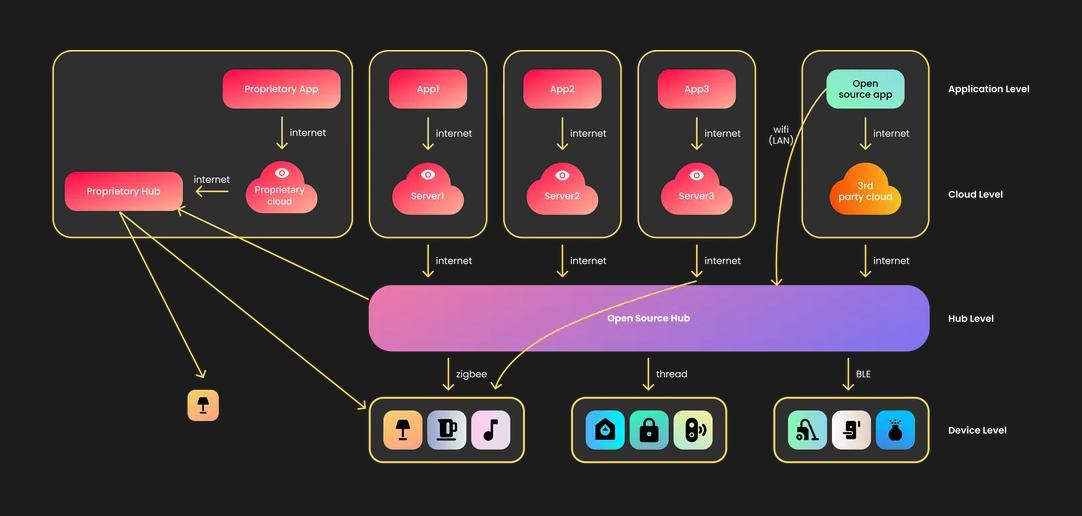
By the way, this example reminds me of something:
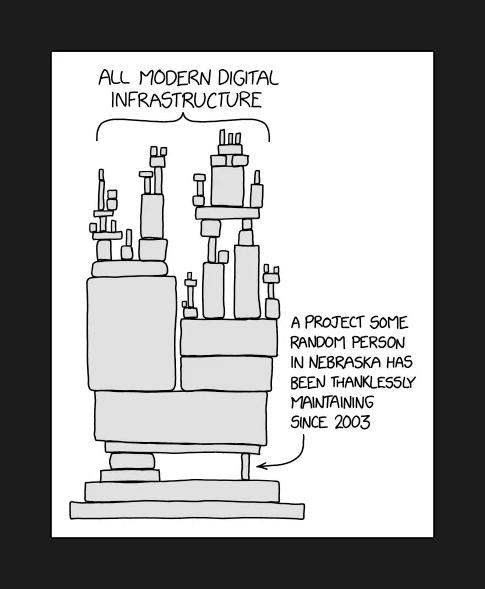
So we have 4 layers: devices, hub (automation, software control), servers, interface (apps, voice assistants, etc.). The ecosystem is all 4 layers and their connection, not just one. To make everything work perfectly, we don't just do one of the layers, for example an automation system at the hub level. We do all three top levels: app, voice assistant, cloud, and hub with maximum support for third-party devices, thus maximizing compatibility and integration of the whole system out of the box: autonomous, private, independent and secure. This is MajorDom.
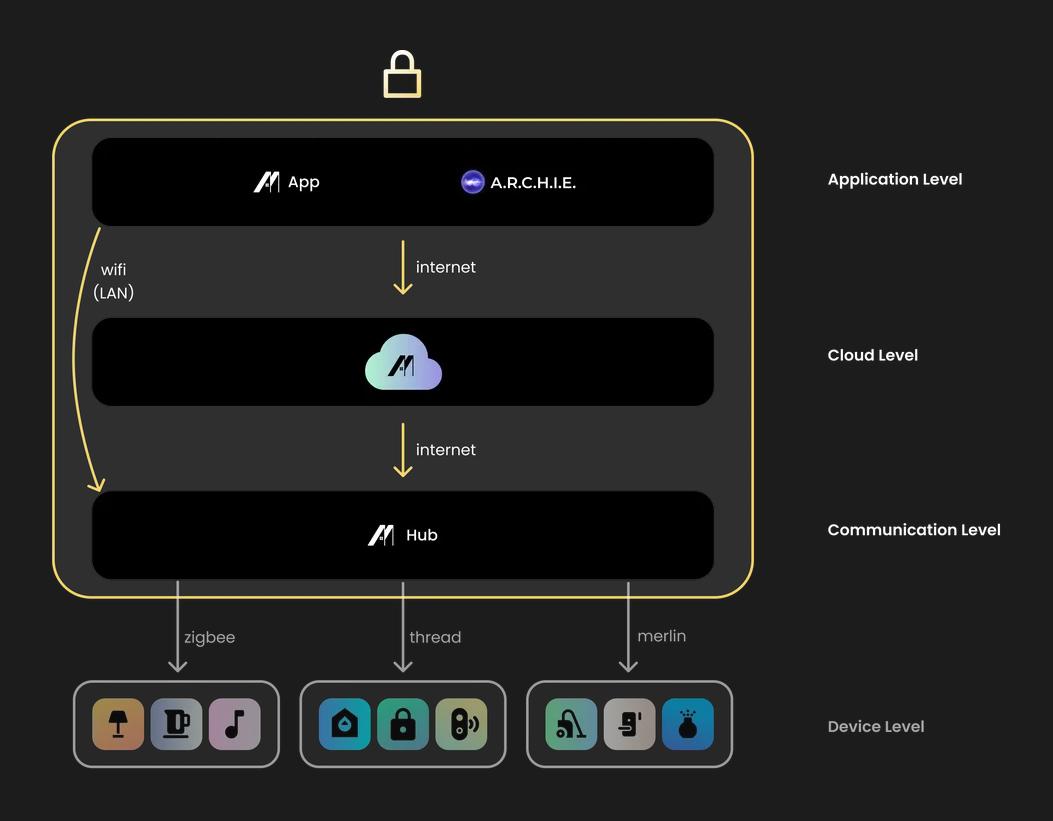
Why our ecosystem is smarter: our philosophy
We lay the following principles as the foundation of our work:
Complete privacy of personal data — home is not a place for prying eyes. Privacy is a basic right of every user.
Autonomy — maximum independence from the outside world, disconnected Internet should not be a problem
Ease of setup and use — technology should serve people, and not vice versa. It's fine to dive deep into hobbies, but many just need something that works right out of the box.
Maximum support for different devices, protocols, and integrations — in addition to the previous point
No artificial restrictions — avoid being Apple and give the opportunity for deep configuration and customization to those who require it.
We make a completely private, fully autonomous, truly SMART home that is different to the options promoted by big tech. We are convinced that privacy is not just something abstract, not even a promise. Privacy — is your core right. And we believe that technology must work for you, not the other way around.
No sacrifices, no exceptions.
So, we are going to reinvent the smart home. In our vision, a true smart home has an invisible army of devices, that are working autonomously in the background, improving your everyday life and covering your back. It's like having a digital majordomo.
A true smart home must be independent from the outside world. No failures because the internet or a random server is down. It's a fully autonomous ecosystem that doesn't require anything else, either: not internet, not cloud services, and not even a human.
At the same time, a system must be simple to use. No long installations or configurations. No periodical change of settings. No code writing. Just plug and play. Technology must work for you, remember?
How: Architecture design
But, how do we do it? First things first, the system needs a name. We called the system MajorDom. And it perfectly fits the description.
Privacy Implementation
But how we deal with the most important thing — your data?
While all other systems are black boxes, we believe that MajorDom must be open source, so there is no behind-the-scenes manipulation and anyone can open and read it, highlight issues, suggest changes, or even contribute to it.
While the source code is publicly available, your data is protected like never before. Let’s talk about some technical solutions MajorDom utilizes.
To make the system private and autonomous, most of the data is stored locally on the devices and generally on the Hub. This guarantees privacy, and since all data is stored locally, automations and all the other features work perfectly even in the absence of the Internet. This is unlike other systems, which always rely on the internet connection because all data is sent and stored somewhere on the server. We have no 3rd-party services, no extra transfers, no data collectors.
But in some cases data must be transferred though the internet, for example with remote control when you're on the go. In this case, data is securely end-to-end encrypted and keys are stored only on user’s physical devices. That means you can actually access all of your accessories remotely, only you, and absolutely no one else, including admins and developers.
Supported Devices: Matter, Merlin.
Of course, before setting up automation, you need devices in the house. The Zigbee Alliance, renamed the Connectivity Standards Alliance or CSA, is a coalition of various smart home companies that have decided to create a universal communication protocol for all home automation devices. They called this protocol Matter. And MajorDom is compatible with it. This means you can add any Matter compatible device to your MajorDom system. And that is not all.
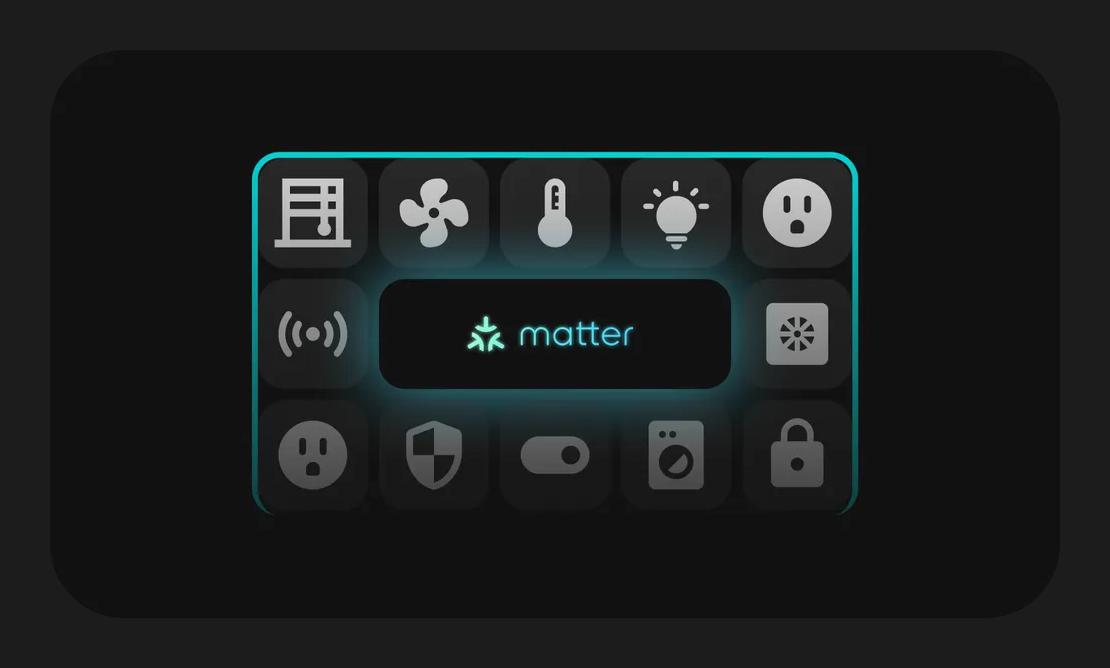
Matter natively only supports the most common underlying devices, which is why we created the Merlin communication protocol. Thanks to a more flexible architecture, it not only significantly expands the list of supported devices, but also makes it endless.
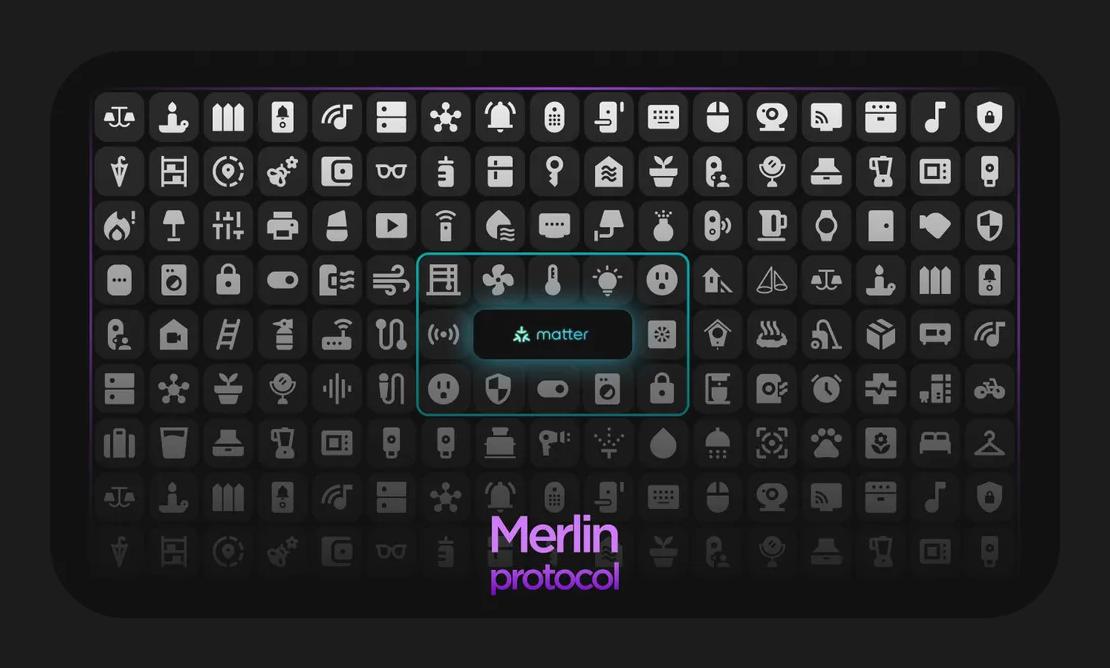
At the same time, we understand that today only a small portion of devices already released support one of these protocols, so we are also going to add integrations of devices using zigbee, z-wave, wifi and BLE, thus becoming the most universal ecosystem.
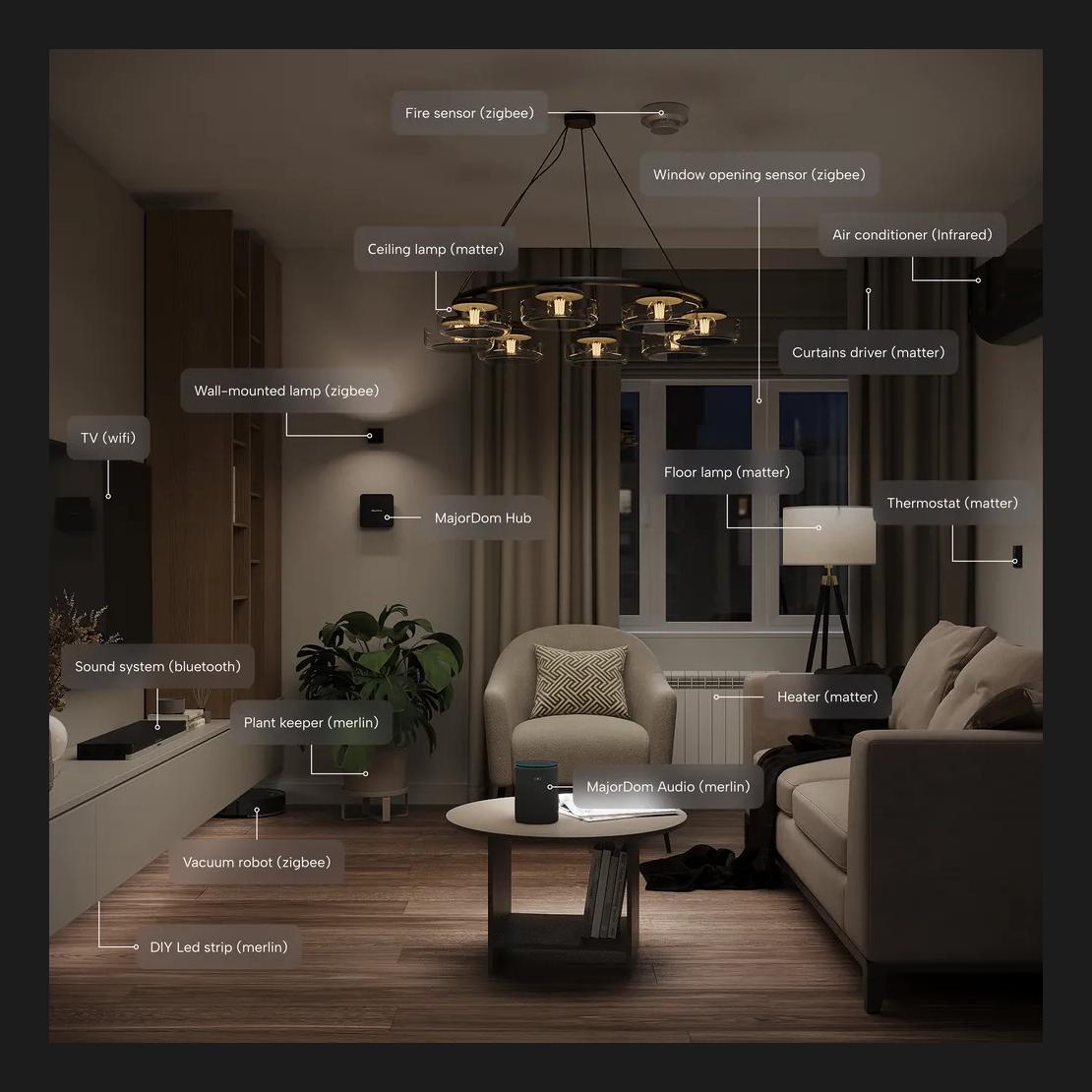
Interface
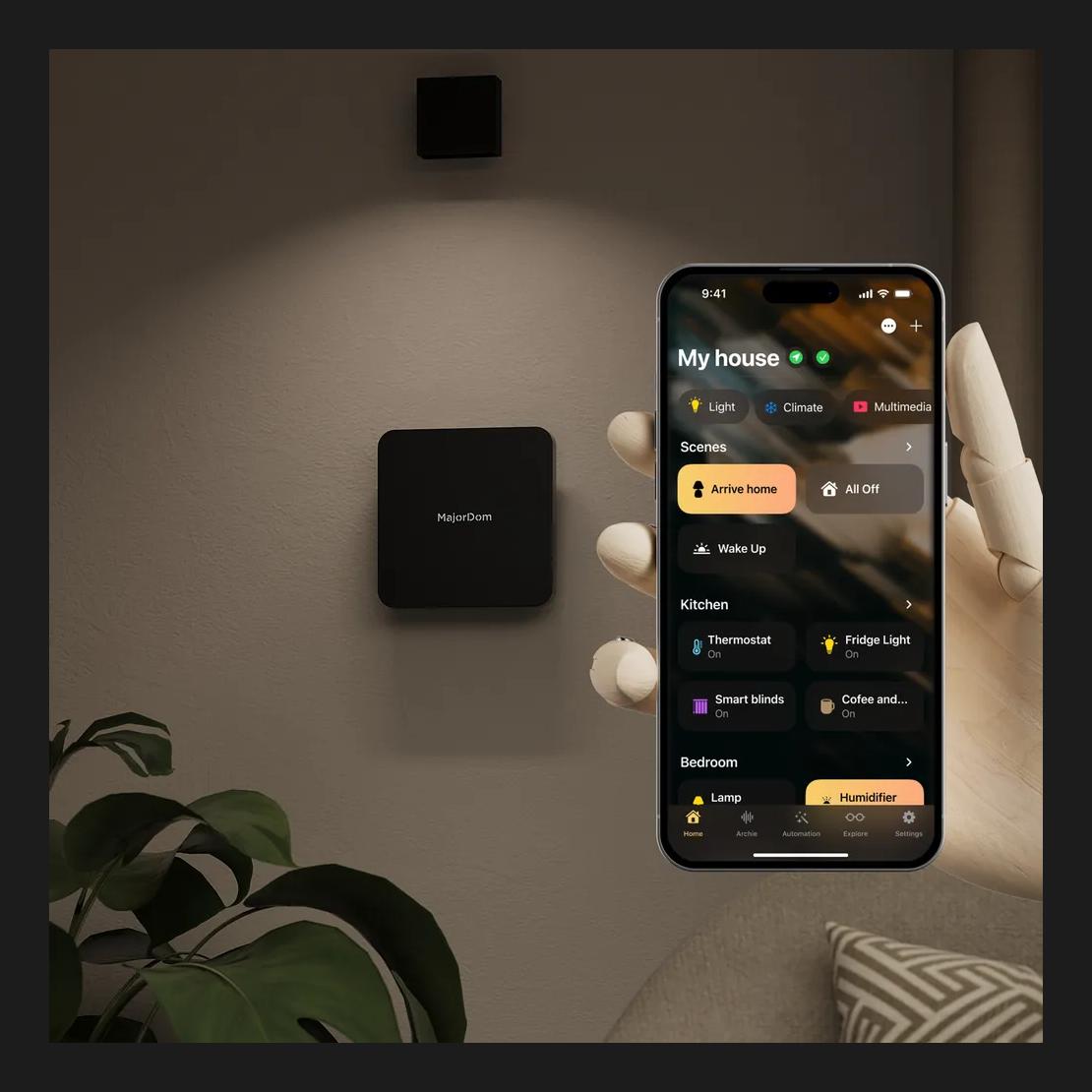
Now, how are we going to communicate with this? For this task, we designed a beautiful application, with customizable themes. It's a real pleasure to use. And it's available for all major platforms: android, including smartphones, tablets, and watches, and iOS family with iPhones, iPads, Macs, Watches, tvOS, and even future visionOS. The app also includes widgets that you can add to your desktop, home, or lock screen with any supported device, so you can access your home even without launching the app. We have ensured that full control of your home is always at your fingertips.
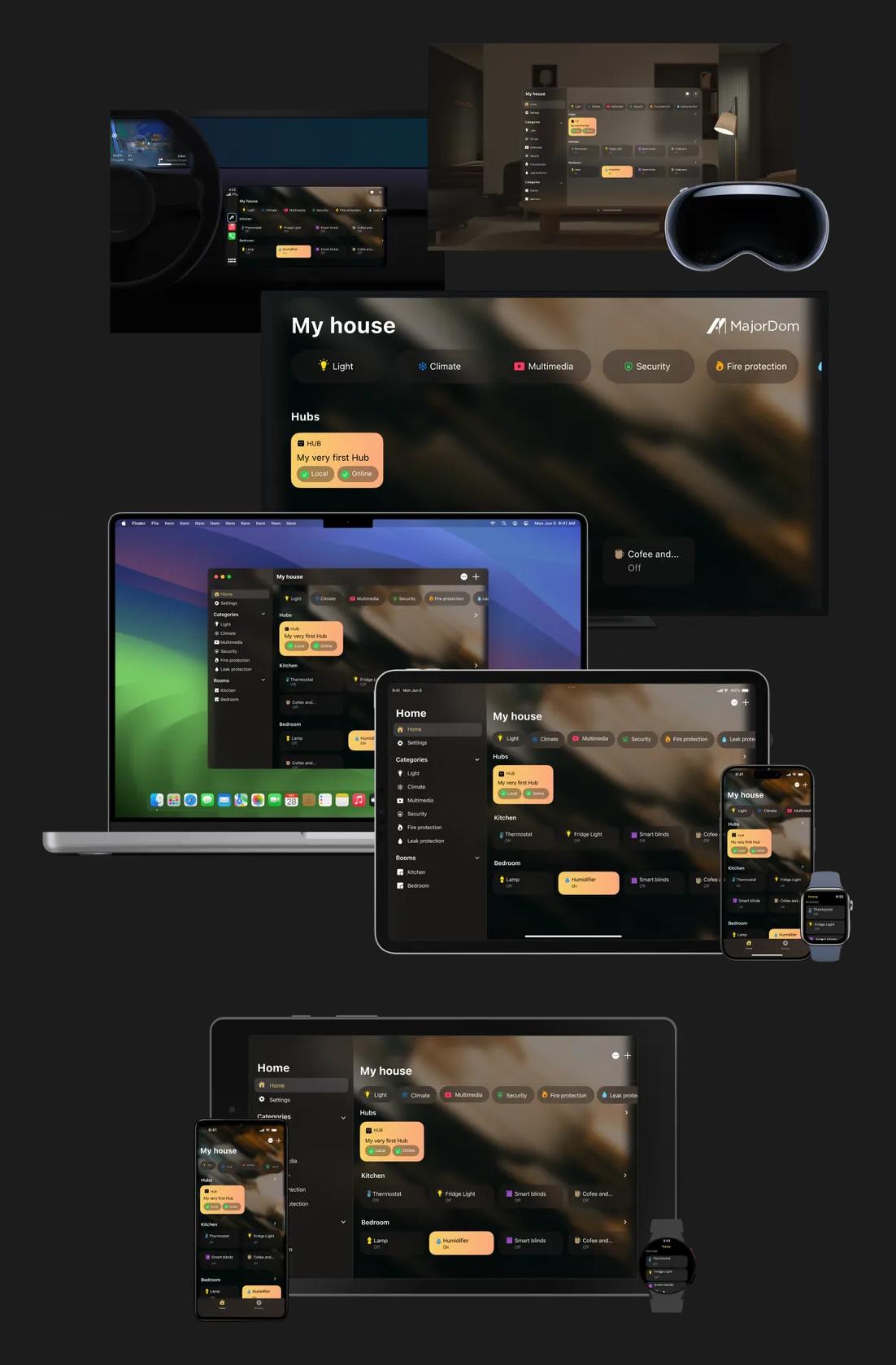
But a truly smart home must work autonomously most of the time, in the background, so you don't even notice it. Now, how are we going to automate this? Write scripts, like every other system, right? We’re going to use scripts? No. Nobody wants to write scripts. And we know this. Instead of this:
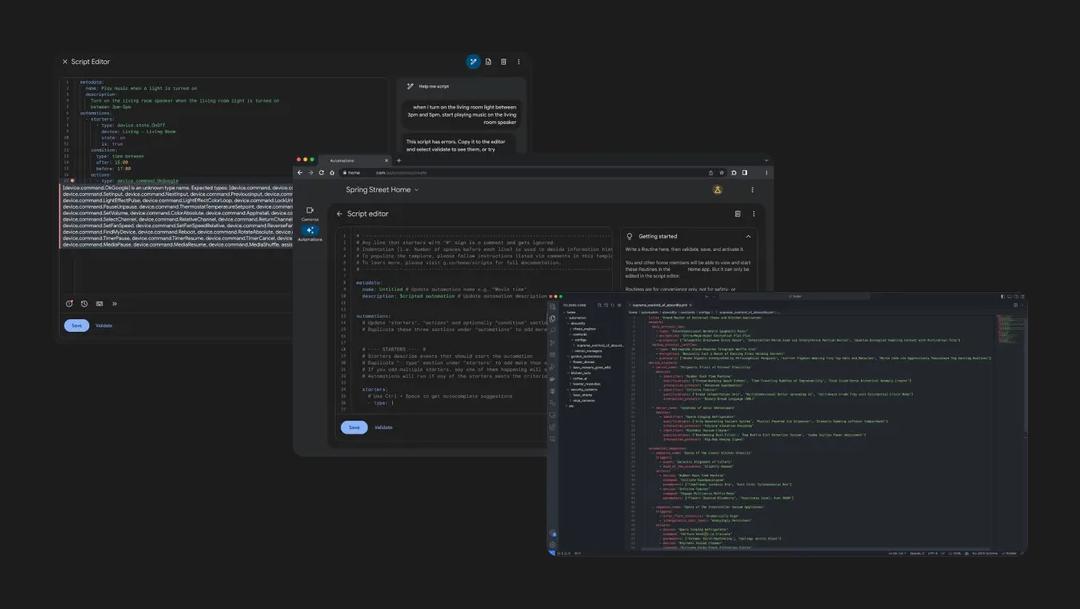
For automations, we added the second amazing tab to the app, which helps you set up any scenario with ease.
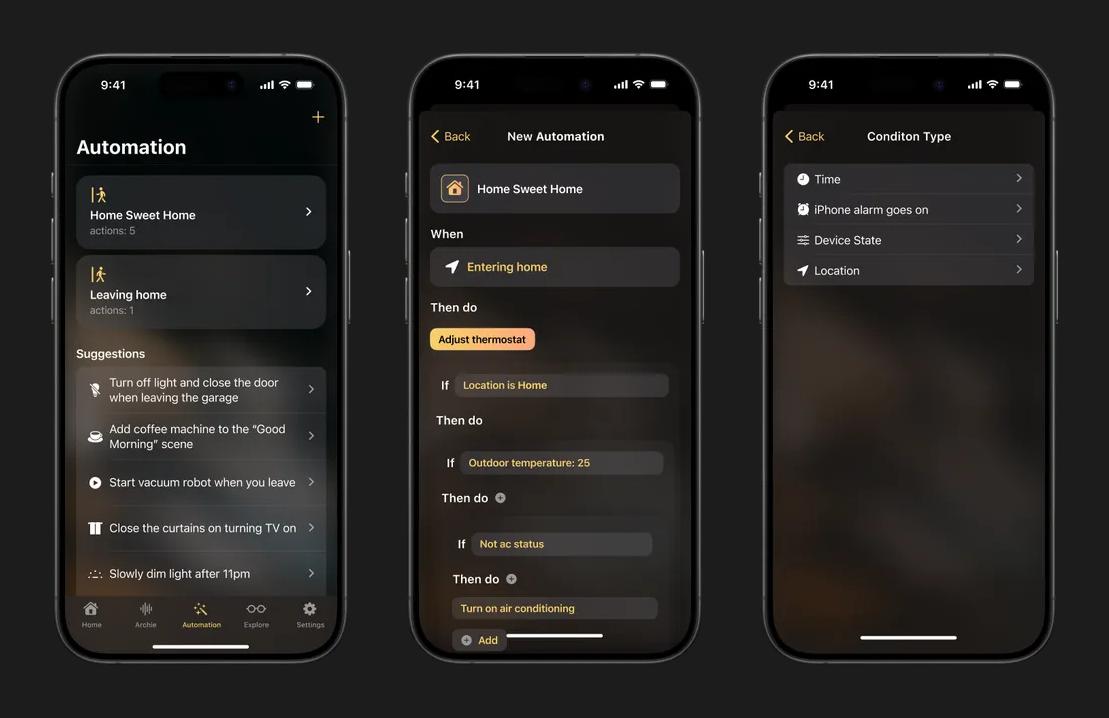
To simplify the process even more, we invented a smart suggestions technology that predicts what you want to automate. And sometimes it's so smart, so it even doesn't require the user’s help. For instance, you can just add all accessories and start using them without adding any automation or scenario. After a short time, this technology will suggest scenes and automations based on your habits. You can even allow it to add scenes and automations without confirmation in the background. It's that easy. And it's phenomenal. It works like magic. We called this technology Smart Automation.
Archie — a Smart Voice Assistant
Automations are good for everyday routine. But sometimes you need a more personal touch that's more than just commands and controls.
Archie, the Autonomous Responsive Cognitive Home Interaction Engine. The voice assistant that outsmarts all others and really understands you. Archie is able to understand what you need to an extremely high level of precision and makes communication effortless by offering a live language experience that feels spontaneous and conversational. Top of the line.
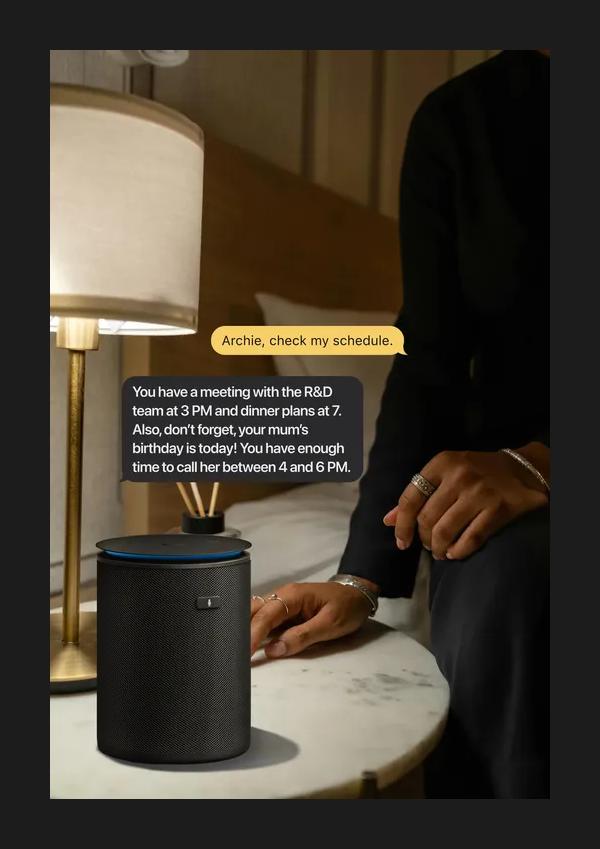
Like a truly professional majordomo, Archie speaks many languages. He can simultaneously listen to up to three preselected languages.
But Archie isn't just for controlling your home; it's for every facet of your daily life, from managing tasks to providing general information.
Archie inherits all the core values of MajorDom: private, autonomous, easy to use, and truly smart. Archie can work completely offline, but the Internet expands its possibilities to an unlimited range. Powered by the largest language models, Archie's skills are closer to real artificial intelligence than ever before in human history.
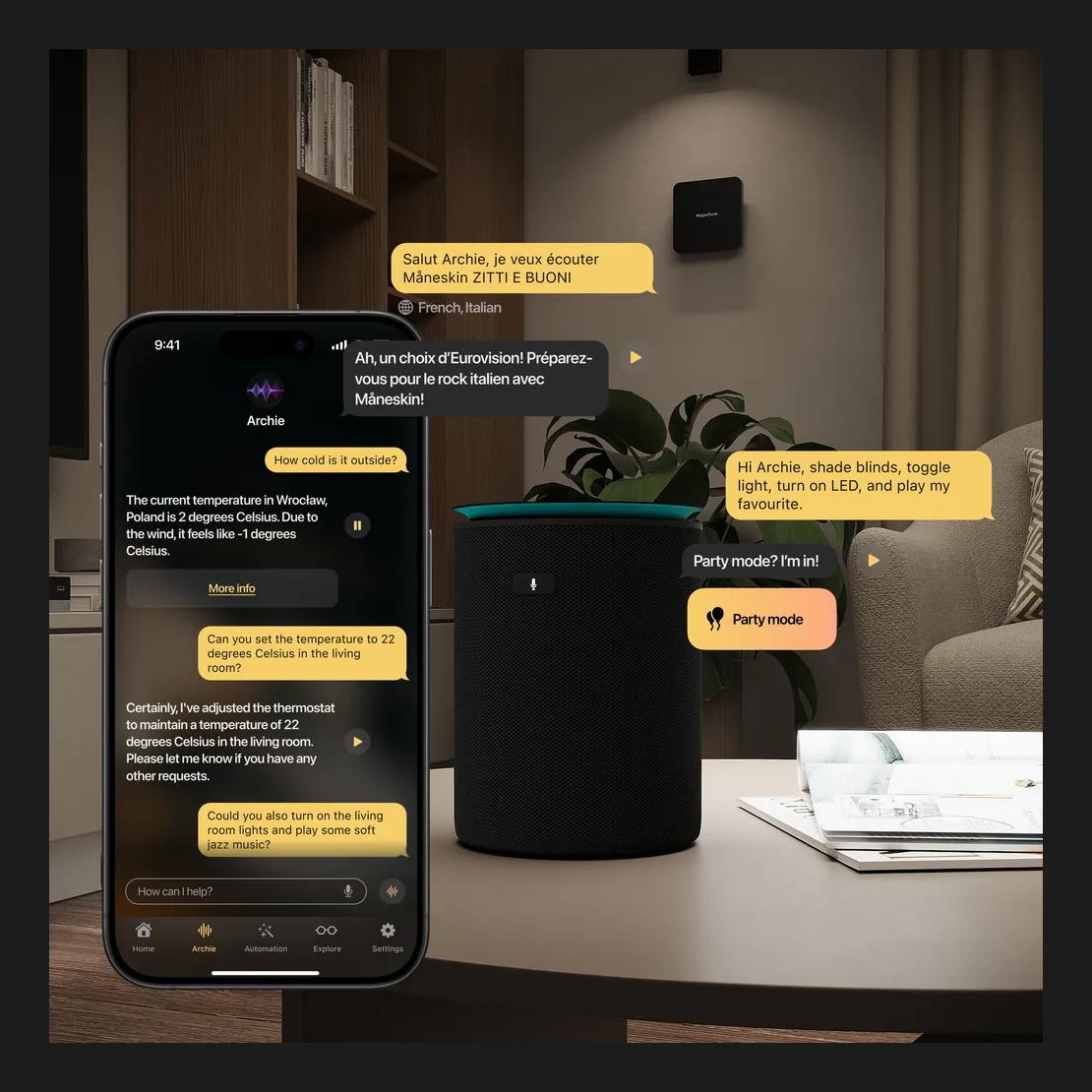
Work out of the box: we make our own devices
“People who are serious about software should make their own hardware” — this quote is especially relevant for a smart home. This is the only way to ensure seamless integration of multiple protocols out of the box. The same goes for the assistant: not every platform can handle offline speech recognition, processing, and synthesis. In addition, you can completely trust it only when you know that there are no third-party software on the device with access to the microphone. That's why we're developing two of our own: MajorDom Hub for device management, automation; a portal to the ecosystem — like the hands of the home. And MajorDom Audio — a smart speaker for Archie; the ears and voice of the home.
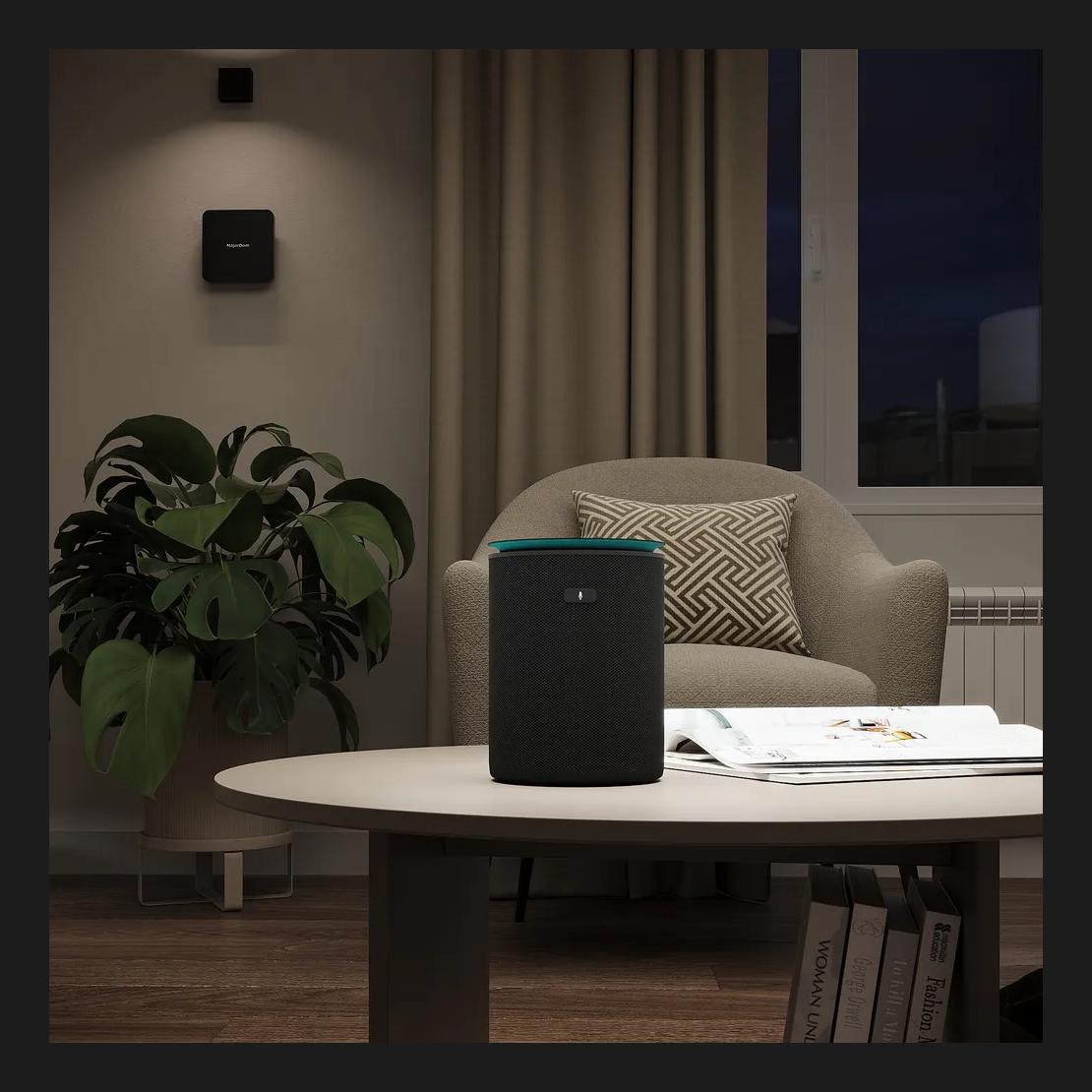
One last thing… for Contributors.
We want to make it as easy as possible for people to integrate their ideas — whether hardware or software. To this end, we have created two major tools to allow everybody to become a contributor.
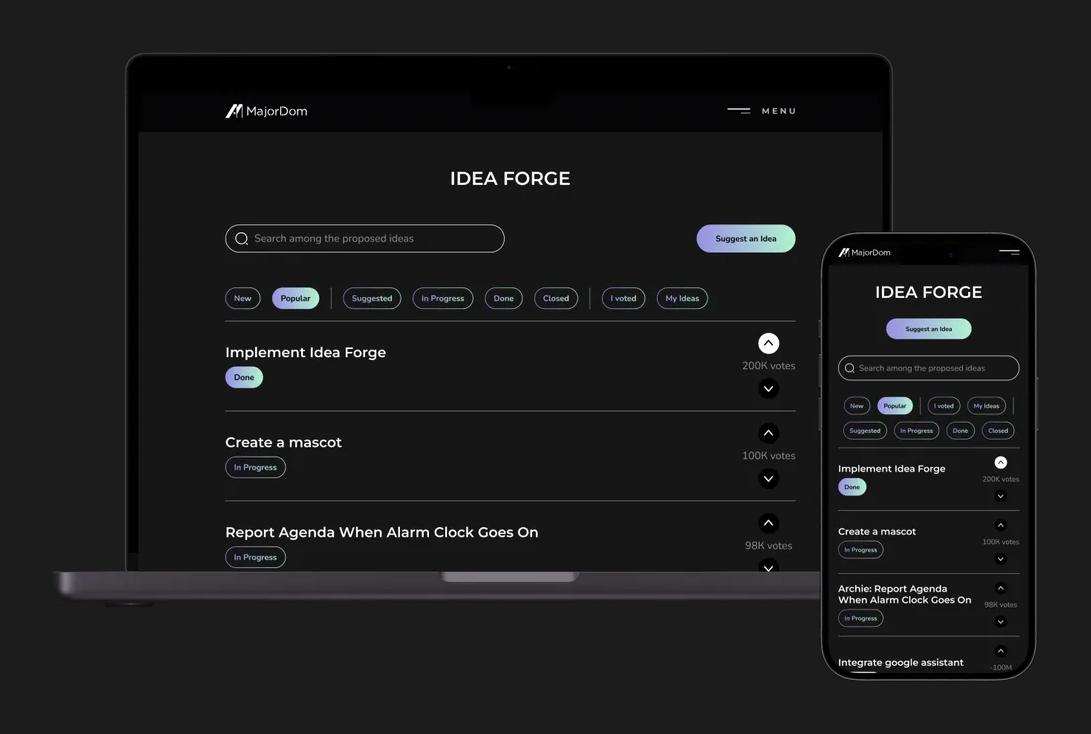
First, in the development of MajorDom, we've established the 'Idea Forge'. This platform transforms user proposals into practical features. Anyone can submit ideas through the idea suggestion form. You don't need to be a coder; you just need a spark of innovation. These suggestions then appear on a community voting board, allowing everyone to influence the development process. Democracy in action. The most popular ideas are considered for implementation by the MajorDom Team. This isn't just about users; it's about turning users into makers.
But it's not just a waiting game. If you're feeling adventurous, or you just can't wait, you can roll up your sleeves and code any feature yourself. You contribute, you create, and who knows, you might just end up part of the MajorDom team.
Secondly, we are simplifying the job for all developers. We build modular hub firmware with plugin support and convenient libraries with detailed documentation.
Conclusion
At the moment, the project is still under active development, but most of what is mentioned has already been implemented, including the core of the system, integration of some protocols, remote control, automations, the offline part of Archie and the mobile app. We will publish further news here, but I also recommend subscribing to the relevant project pages on social networks. Sign up for early access at majordom.io
Join the project
The project is quite complex and large-scale, and a high-quality result requires many hours of work by professional engineers, programmers and designers. In the modern capitalist world, only commercial development can guarantee a stable result.
Pre-orders, Kickstarter, Donations
In the near future, the project will be published on Kickstarter — a crowdfunding platform on which it will be possible to place the earliest pre-orders of devices, but you already can financially support the project on patreon or buymeacoffee.
Become part of the team
Our team already has designers, software engineers for the frontend, backend, mobile apps, the Hub, and the voice assistant. At the same time, we are looking for industrial designers, embedded hardware engineers, as well as programmers who understand the low-level details of popular protocols in the smart home field. If you are doing something else, but want to join the project, write your suggestions, everyone is welcome.
Investors
We are also considering receiving investment from a $50k pre-seed round for a share of the company. Speaking of numbers, the current smart home market is valued at US$100 billion, with a projected growth of up to US$600 billion in 2033. Looks like a great investment opportunity.
Contacts
Telegram: t.me/MarkParker5
Email: mark@parker-programs.com
Subscribe to my newsletter
Read articles from Mark Parker directly inside your inbox. Subscribe to the newsletter, and don't miss out.
Written by
